Lead Generation
A Simple Guide to Converting more Leads in 2024

Delia T.
Delia T. | Feb 05, 2023 | 9 MIN READ
Feb 05, 2023 9 MIN READ

According to Zippia, 85% of B2B content marketers are focused on lead generation. Therefore, in this article, we're going to talk about how to convert more leads in 2024. Are you ready?
5 Psychological Triggers to Convert Leads into Customers
As you read, a big percentage of marketers are focused on generating leads but what happens next? What about converting those leads into customers? That's a big deal! However, it’s easier than you think, you just need to give them what they want.
To have success in your business you need to understand consumer psychology first.
Why? Because our minds decide what to buy. So if you know how minds work, you have the power to influence the decisions they make and use all that information to make your company grow.
So, here are 5 psychological triggers you can start using today to increase your sales:
1. Novelty
Everyone wants to be on trend, that’s because we love novelty. Researchers have long suspected that the human brain is particularly attracted to new information. Novelty increases the motivation levels in our brains that stimulate us to make decisions.
If you want your prospects to buy your products or services, create new ones, make some changes, or update the old ones and rebrand them. A region in the midbrain responds better to novelty than to the familiar, so try to innovate your products or services every few months.
2. Explain Why
We as human beings are always searching for answers. We are curious about everything around us because we need to understand every situation even when it can’t be explained.
So, try to explain why you are offering something, your leads need reasons why they need your service or your product. In that way, you’re helping them to make a decision.
3. Tell a story
When you buy something that you really want or that makes you happy, you feel anxious about telling your friends or your family, right? that’s why telling stories is the way we transmit messages and it’s closely connected with emotions.
“When we read a story and really understand it, we create a mental simulation of the events described by the story," says Jeffrey M. Zacks, study co-author and director of the Dynamic Cognition Laboratory at Washington University in St. Louis. It’s like feeling an experience without living it.
Every business has its own story and yours has to truly stand out. Focus on your story, highlight some impactful information about your products and services, and make your public feel an emotional connection with your story.
4. Simplify your solution
In the last century, technology has advanced a lot and there are 5.16 billion people using the internet. What does it mean? People are used to having the answers to their questions just with a click. We are always searching for easy solutions for everything.
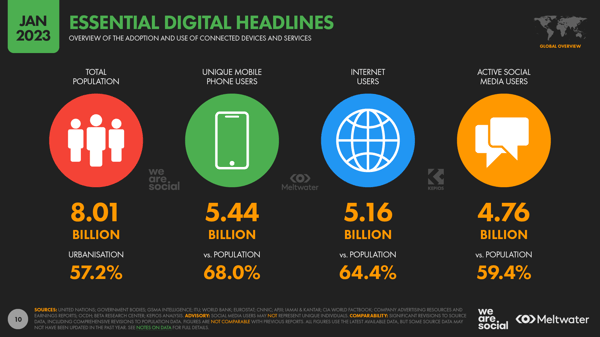
In conclusion, less is more. Use words like easy, step-by-step, fast, system, or framework to make your public understand that your solution is simpler than others and they will be far more likely to buy from you.
5. Make your potential customers feel important
People want to be treated as humans and not like just as numbers. We need to feel that we are significant, so try to show them that you’re interested in helping them, but to do that you need to understand what they need. Studying your buyer persona again could be a good practice to identify what your lead is looking for.
There are many ways to make a person feel valued, for example, you should have a space of frequent questions in your site, that allows you direct communication with your clients and it’ll make them feel that you’re interested in answering all their doubts.
Another way could be to offer an extra service, credit card, or membership that rewards them for their preference and that makes them know that are part of your company.
If you want to learn more about Psychological triggers I recommend this article: 15 Psychological Triggers to Convert Leads into Customers.
Different Types of Lead Conversions
Now you know a little about the psychological triggers of consumers, let’s talk about types of lead conversion. First of all, What does conversion mean? Conversion is a change, every time your leads make an action to know more about your services or buy your products, that’s a conversion.
There are different types of lead conversions:
Lead generation form
You can capture valuable information about these potential customers after they fill out your form. This can include contact information, like name, address, email address, phone number, and more.
Use social media channels such as Facebook and Twitter, email newsletters, and your company blog to drive traffic toward your lead generation form. You may also want to consider paid online advertising and pick the network that best suits your needs.

Phone call
A direct telephone call from a potential customer is always useful to make a conversion. Prepare your pitch before and keep in mind that people need valuable information.
View-through conversion
This type of lead conversion takes place after someone sees one of your ads, but does NOT click on the ad, but completes a conversion. An example would be someone who sees your ad, but then, rather than clicking it, they may simply enter your URL in their address bar and complete a conversion on that visit.
Calls to action
The call to action is a key ingredient to any effective lead conversion. A call to action like a free download, try it now, read it more, can help your leads to take a specific action that benefits you.
Landing pages
Nowadays, marketers are working so hard to drive traffic to their websites and blog pages but if these destinations aren’t good enough to convert your leads into customers, you’re wasting your time. That’s why landing pages are so important in the process.
A landing page it’s any webpage where you send visitors, to initiate a conversation and close a deal.
But the key to an effective landing page is not just the design or the call to action and graphics are the way you organize the information. So, I will show you seven basics of a landing page:
Headline
This is the most obvious feature of a landing page. You need a striking title to catch your consumer's attention. This is the only chance you have to engage the user enough to stay on the page and continue reading the rest of the content. Of course, the size of the headline matters! It should be larger than the other font.
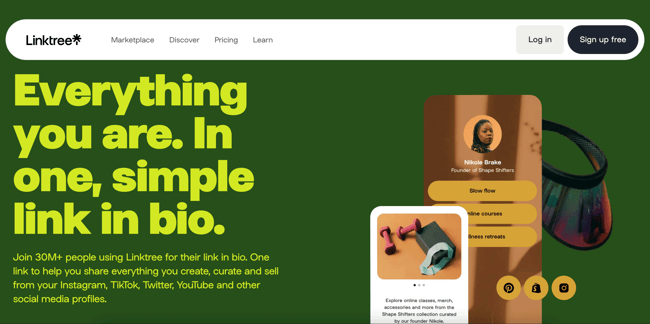
via: Linktree
Subheadline
Every great headline is followed by a subheadline. The subhead serves to provide extra information and highlight its benefits. The subheadline should always be positioned close to the main headline with a smaller font size. They go together.
%2010.28.18%20a.%20m..png?width=650&height=318&name=Captura%20de%20pantalla%202023-02-09%20a%20la(s)%2010.28.18%20a.%20m..png)
via: Mailchimp
Image
Every long-form page most likely needs images, and these images should come on the top, but this is not a rule. However, testing is required on your part. Images are used to enrich your offer but be careful! Images can affect where the visitor’s eyes go.
Many landing pages use full-screen images with great success like in the example below.
%2010.23.07%20a.%20m..png?width=650&height=332&name=Captura%20de%20pantalla%202023-02-09%20a%20la(s)%2010.23.07%20a.%20m..png)
via: Airbnb
Video (if it’s necessary)
Videos can be a powerful tool to show how amazing your products or services are. Video can also lead directly to sales. Studies show that 74% of users who watched an explainer video about a product subsequently bought it. Videos don’t have to be perfect, the content it’s what matters.
The best place for videos is above the fold, where users can see the video and choose to play it (unless the video is auto-play).
How it works
In this section, you must explain how your product or service works. This section can be used for as long as you want. Sometimes it’s hard to explain the purpose of your service or product in a paragraph, in that case, you can use a video tutorial, and it’ll be easier to understand for your visitors.
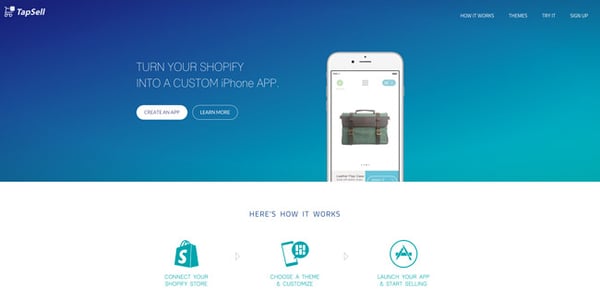
The benefits
To engage your audience, you must show them why your product or service going to solve their problems. In this part, you have the opportunity to convince them that you are the best solution. Your benefits are a checkpoint list. Describe, in short lines, the characteristics and uses of your product.
This section could be after you explain how your product or service works. You can also use icons to strengthen your benefits.
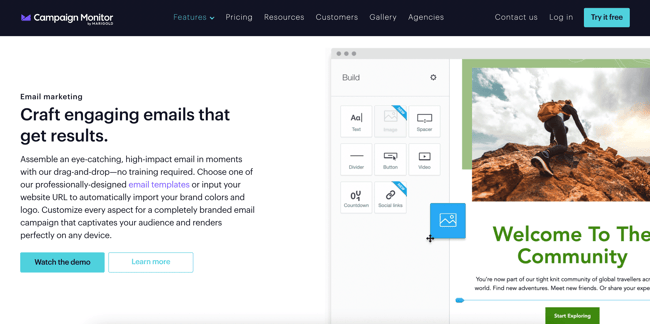
via: Campaign Monitor
Call to action
Calls to action or CTAs are very important, they have to be short and straightforward. You must place your call to action as early on in the process as possible. There will be some users who will convert early. You need to accommodate those users, by allowing them to convert. You can place more than one CTA, you can do it on the top, in the middle, and at the end of the landing page.
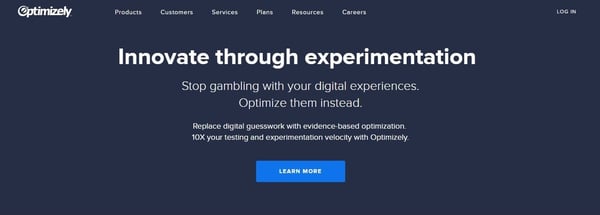
Testimonials
Social evidence is a powerful persuasive feature in conversion optimization. It’s about sharing the experience of other users who already have bought, consumed, and taken part in what you’re offering. Usually, testimonials are placed closer to the end. For many leads, it’s easier to become a consumer if they see that others have already done it before.
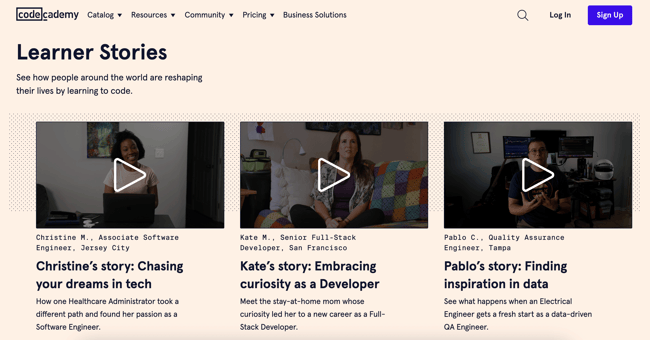
via: Codecademy
TABLE OF CONTENTS
Stay Updated with Our
Latest Posts
Subscribe now to receive the freshest content, insights, and updates directly in your inbox.
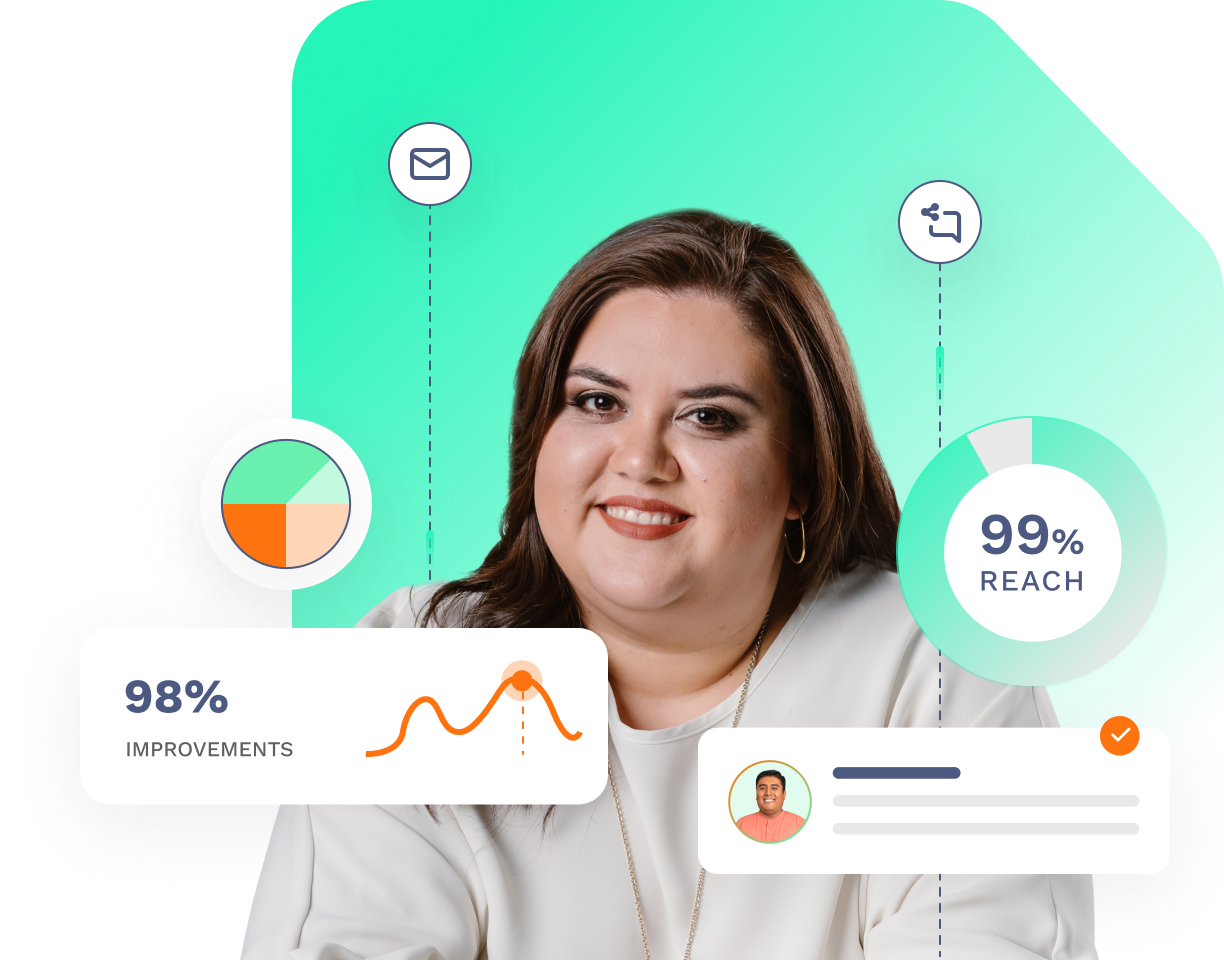
Recent Articles

2024 © The Orange Box Agency – All rights reserved



.png?width=90&height=90&name=facebook%20(1).png)
.png?width=94&height=96&name=Vector%20(1).png)